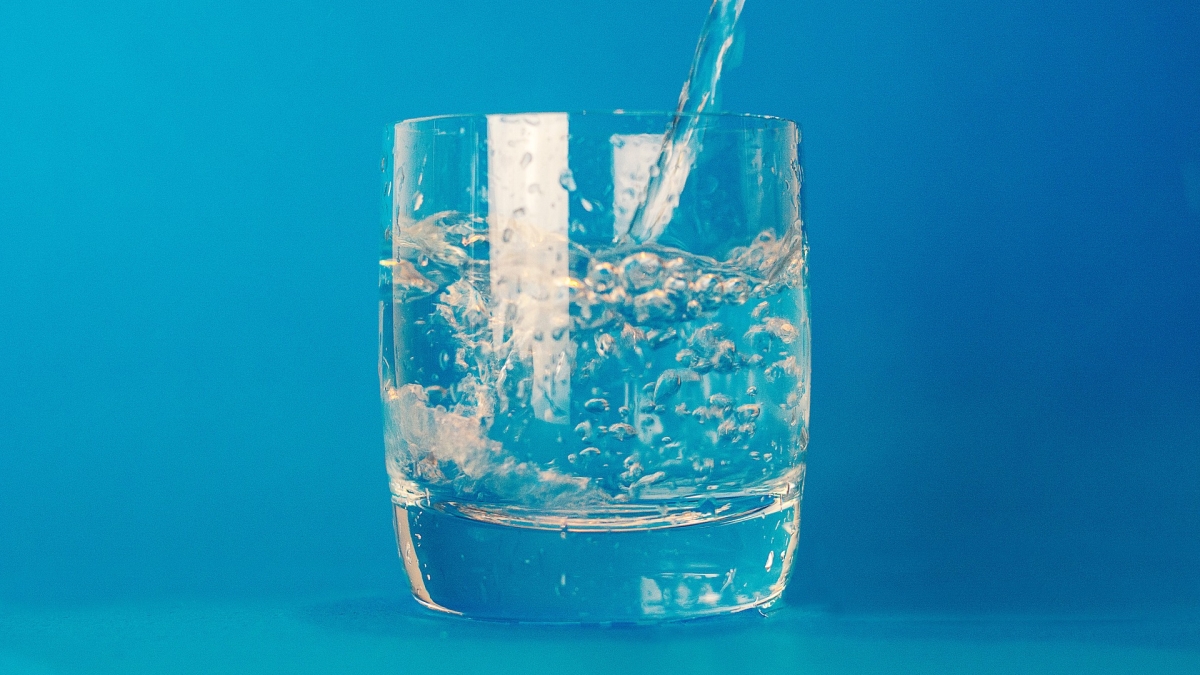Editor’s note: This story is being highlighted in ASU Now’s year in review. Read more top stories from 2020.
Leonardo da Vinci called water “the driving force of all nature.” Indeed, it is common knowledge that it is an essential, life-sustaining element. But according to recent data collected by the Centers for Disease Control and Prevention for the National Health and Nutrition Examination Survey, over 65% of adults ages 51 to 70 in the U.S. are not properly hydrated.
Concerned by that statistic and what it could mean for the health of that rapidly growing demographic, Arizona State University College of Health Solutions Professor Stavros Kavouras, who directs the university’s Hydration Science Lab, collaborated with colleagues on a study to investigate potential related health outcomes.
In a paper published by the journal Nutrients, the team found that underhydration was significantly associated with an increased prevalence in such chronic conditions as obesity, high waist circumference, insulin resistance, diabetes, low HDL, hypertension and metabolic syndrome.
Perhaps most troubling, they also found that underhydration was associated with 4.21 times greater chronic disease mortality.
ASU College of Health Solutions Professor Stavros Kavouras
“Not only was underhydration linked to chronic health conditions, but we were also able to identify that underhydration was linked to life expectancy,” Kavouras said. “There was a significantly higher association with mortality from chronic disease in the group that was underhydrated.”
The researchers focused on adults ages 51 to 70 not only because they represent a growing population of Americans, but because they are the most vulnerable to developing chronic health conditions.
Their findings are based on publicly available data collected by the CDC over the past three years. Though the data does not necessarily demonstrate causality (that will be the next step for Kavouras and his team, when they conduct a study using randomized control groups), it is stratified in a way that makes it representative of the U.S. population, regardless of such factors as gender, socioeconomic status and ethnicity.
“So whatever conclusion you make out of this data, it carries a generalizability for Americans overall,” Kavouras said.
Researchers have found that most people are either “high drinkers,” or “low drinkers,” meaning they either drink more than enough water or less than enough. Studies from the past decade have identified two major differences between the two: Those who drink too little water have elevated levels of both antidiuretic hormones, which Kavouras has found to be linked to diabetes, and the stress hormone cortisol, which is implicated in several negative health outcomes, including metabolic syndrome, hypertension and obesity.
The adults Kavouras and his team studied were determined to be underhydrated based on a urinary biomarker. There is a distinction between being underhydrated and being dehydrated: Dehydration is acute, sometimes requiring immediate medical care but lasting only a short time. Underhydration is chronic, with negative health outcomes only presenting after a prolonged period of time. Often, people who are underhydrated don’t even know it.
“Fortunately, this is something people can easily keep track of,” Kavouras said.
The two main indicators of hydration level are the color of your urine, and how often you urinate. If you’re optimally hydrated, your urine should be lighter in color and you should urinating between six and seven times a day.
“We’re finding that statistically combined, those two biomarkers have almost excellent diagnostic ability of underhydration,” Kavouras said.
Another important thing to consider is that your hydration needs can vary from day to day, based on things like temperature and physical activity. In order to ensure you’re well-hydrated on a regular basis, Kavouras suggests becoming friends with regular, plain old water.
“It’s the best way to stay hydrated,” he said. “It has no calories and can offer a lot of health benefits.”
But if you just can’t abide, he suggests livening up your water with some fresh fruits or veggies. And make a point to always have water on hand — just as when something is out of sight, it’s out of mind, the opposite is also true.
“The most important message here is that underhydration is something that can be easily fixed,” Kavouras said.
Top photo courtesy of Pixabay
More Health and medicine

ASU's Roybal Center aims to give older adults experiencing cognitive decline more independence
For older people living alone and suffering from cognitive decline, life can be an unsettling and sometimes scary experience.Arizona State University is out to improve that experience.Two projects…

Dynamic data duo advances health research
The latest health research promises futuristic treatments, from cancer vaccines to bioengineered organs for transplants to medical nanobots. While these technologies may one day be…

New study reveals high levels of toxins in seized cannabis from Arizona and California
A recent study conducted by researchers from Arizona State University has uncovered alarming levels of Fusarium mycotoxins in illicit cannabis samples seized in Arizona and California.The study found…



